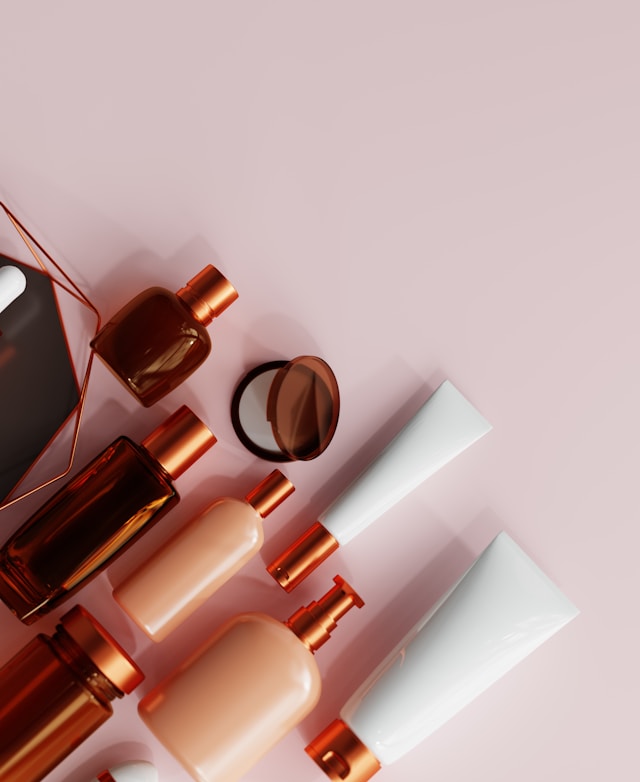

· By Brooke Hamilton-Benjestorf
The Beauty Scaries
There are a multitude of voices swirling through the ethosphere, telling us what we should fear. Actually they’re not just swirling - they’re swirling and screaming like banshees. So. Much. Noise. So. Much. Anxiety. Here are a few of the topics that are being fired at us like thought missiles: what our children are or aren’t being taught in school; what we should or shouldn’t invest in; what foods we should or shouldn’t be consuming; how much we should be planning for the future or focusing on the present; what is happening inside of our bodies due to accidentally-consumed toxic ingredients. I am concerned at some level about several of the items on this list, the latter being one of them. It gives me the real scaries. Fillers, preservatives, and stabilizers are inhaled, absorbed, and integrated into our bodily systems. Including our brains. I tend to cool my jets on most of what’s floating around out there (to be honest) because constant fear and anxiety is just not necessary, and I think my personal sphere is the one in which I can actually, effectively make a difference. But I’m pretty serious about using clean beauty products.
In this post, we’ll be hashing out the scaries, so we can demote them from scaries to things we just don’t use anymore, no thank you. Demand changes the landscape of the marketplace. The more we buy clean, sustainable products, the more they will become available. So, here are some toxins to look out for. If you find that you own products that contain this ick, I assure you there are clean, feelgood products out there to replace them with - ones that work well, too!
1,4-dioxane: This ingredient is not usually listed on the label. It creates suds in hygiene products such as hand soap and shampoo, and is linked to cancer. Because it’s not listed on product labels, I suggest shopping from a retailer who you know does not sell products that contain this chemical additive, or chemical additives at all.
Clean alternatives not containing 1,4-dioxane: hand soap, shampoo
Acrylates: Acrylates are found in nail products, eye makeup, cleansers, and hair styling products. They are harmful when inhaled or absorbed through the skin, sometimes causing dizziness, nausea, and skin reactions.
Clean alternatives not containing acrylates: mascara, sculpting wax, cleansing balm
Benzophenone: This additive protects beauty products from UV light, and derivatives of benzophenones are common in sunscreens. You can find benzophenone in body oils, bronzers, eyelash glues, and moisturizers, among other products. This chemical is toxic and bioaccumulative, disrupting the endocrine system, toxifying the organ system, and has been linked to cancer.
Clean alternatives not containing benzophenone: body oil, lotion
Butylated compounds (BHA & BHT): This is a preservative found in personal care products and food. This phantom ingredient is also linked to endocrine disruption and organ toxicity.
Clean alternatives not containing BHA & BHT: body wash, body butter, body polish
Carbon black: Carbon black is a powder used in pigmentation of dark beauty products like mascaras and eyeliners. Again with the organ toxicity and an increased risk of cancer. Charcoal is an excellent alternative ingredient to carbon black. Look for eye makeup that contains charcoal instead, but make sure to keep reading the label - don’t just stop when you get to charcoal!
Clean alternatives not containing carbon black: brow gel, mascara
Ethanolamine compounds: Some examples of these compounds are MEA, DEA, and TEA. You can find them in shampoos, conditioners, facial cleansers, hair color, foundations, and masks. They are specifically linked to liver tumors. Eke.
Clean alternatives not containing ethanolamine compounds: shampoo, conditioner, cleansing balm
Homosalate: Homosalate hangs out in some sunscreens. It is a potential endocrine disruptor, can impact hormone regulation, and may enhance your body’s ability to readily absorb pesticides. Again, no thank you!
Clean alternatives not containing homosalates: repair serum
MIT & CMIT: These are common preservatives used in liquid personal care products. They are linked to lung toxicity, allergic reactions, and possibly to neurotoxicity. You definitely want to be checking your labels for this one.
Clean alternatives not containing MIT & CMIT: body wash, shave bar
Phenoxyethanol: Phenoxyethanol is an ingredient in just about any cosmetic product you can think of - the unclean versions, that is. They act as preservatives and stabilizers, and are linked to allergic reactions - sometimes life-threatening ones.
Clean alternatives not containing phenoxyethanol: lip & cheek tint, lip butter
Phthalates: This nasty ingredient - banned in Europe but still roaming free in the United States in soaps, shampoos, and hairsprays - is linked to endocrine disruption, developmental and reproductive toxicity, and cancer. Come on, United States. That’s gross, man.
Clean alternatives not containing phthalates: shampoo, hand soap
As we know, this is just a short list. I highly recommend that you dive deeper into the makeup of your beauty and hygiene products. Our bodies take such good care of us. Just think of your skin, holding everything in, escorting the wrong things out, the right things in. She regulates, she radiates. The best way we can say thank you to her and the rest of our mind-boggling temple is to take care of ourselves. We just don’t have to consume the scaries. Take a deep breath and shop clean.
Thank you to safecosmetics.org for much of this important info!
Photo by pmv chamara on Unsplash